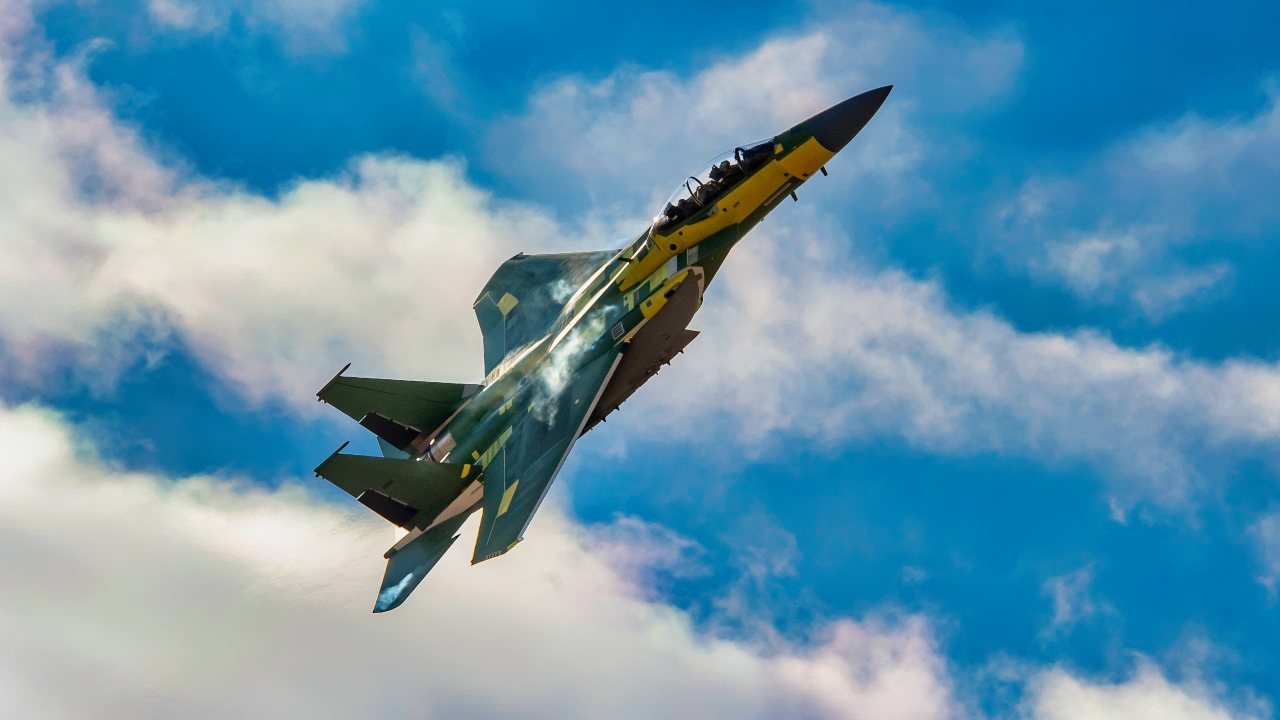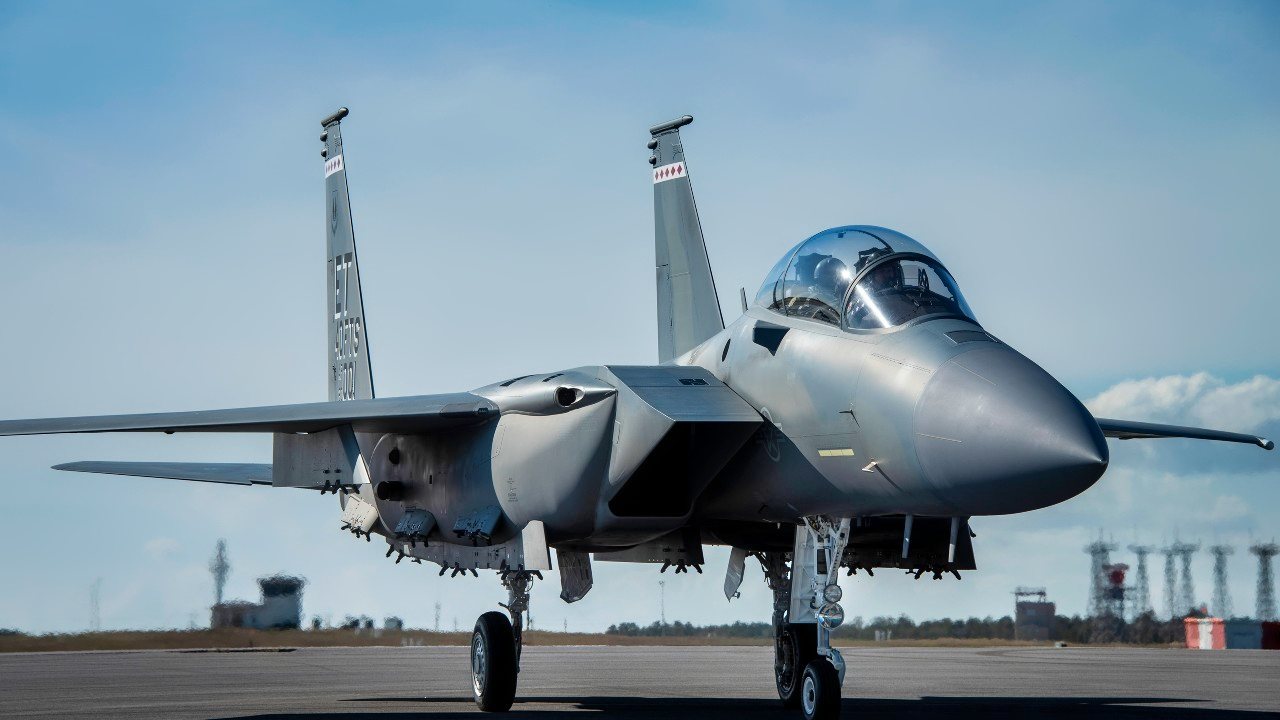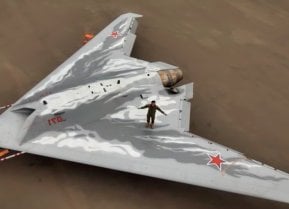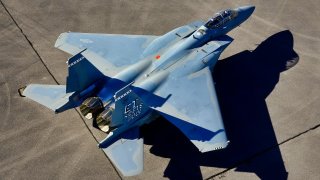Boeing's F-15EX Fighter Is More Expensive Than the F-35: Is It Worth It?
Boeing's new F-15EX is loaded with new weapons and capabilities the Air Force wants. However, the price is becoming a big problem.
The U.S. Air Force Has Received Four F-15EX Eagles to Date – Are They Worth the Cost? - Christmas came early to Eglin Air Force Base (AFB), Florida, as the United States Air Force received a pair of F-15EX Eagle II jet fighters.
The aircraft, known as EX3 and EX4 touched down on December 20, just minutes from each other.
The new arrivals bring the Air Force's total F-15EXs to four, all located at Eglin AFB. The two aircraft belong to the 96th Test Wing (EX3) and 53rd Wing (EX4), who also own the initial two fighters, the Eglin Air Force Base Public Affairs announced.
"The F-15EX has met every challenge we’ve thrown at it to date and the platform is on the cusp of being ready for the warfighter," said Lt. Col. Christopher Wee, Operational Flight Program Combined Test Force commander. "The delivery of the new aircraft paves the way for not only the delivery of combat coded aircraft to the U.S. Air Force, but also the continued development of this incredible addition to the USAF inventory."
The new Eagles offer new features and capabilities to be tested that the original pair of F-15EX fighters didn't have, including a cockpit pressure monitor and warning system, and an ultra-high frequency antenna for satellite communications.
The new aircraft features a forward fuselage explicitly redesigned for the U.S. Air Force. The F-15EX test platforms at Eglin AFB will accelerate the development of capabilities for the platform and other combat aircraft.
The test wings are scheduled to receive two more F-15EX aircraft.
The F-15EX – More Than an Upgraded F-15 Eagle
Critics of the program have suggested the F-15EX is simply a new model of an old warbird.
But supporters are quick to note its current configuration includes the highly-capable AN/APG-82 active electronically-scanned array (AESA) radar and the powerful Eagle Passive/Active Warning Survivability System (EPAWSS) electronic warfare suite, according to a report from TheDrive.
The F-15EX is a two-seat all-weather, multirole fighter that offers enhanced capabilities that are completely unique to the U.S. Air Force. It includes fly-by-wire flight controls, new weapons stations, a new electronic warfare suite, advanced radar and computer, conformal fuel tanks, and a strengthened airframe.
The improved F-15EX also features a deep magazine, allowing it to carry a load of advanced weapons – yet with a 28 percent larger payload than the F-15E.
At the same time, the fighter will require only minimal transitional training and little additional manpower from the older versions of the F-15. According to the Air Force, it has also required little to no infrastructure changes.

The Air Force has estimated that the F-15EX fighter shares about 70 percent of parts with the current F-15Cs and F-15Es that it will be replacing. In addition, the original production lines in St. Louis still in place, while the aircraft's training facilities, maintenance depots, and other infrastructure can be also be readily shifted to F-15EX support.
The aircraft, though lacking stealth and other capabilities of the Lockheed Martin F-35 Lightning II, could still be well-suited to serve as airborne controllers for future Collaborative Combat Aircraft and other drones, as a launch platform for advanced weapons including hypersonic weapons and other large ordnance, and as a new platform for advanced electronic warfare (EW) platforms.
Given that the aircraft has been touted to be a "do-it-all" fighter, the question is whether 104 of the aircraft are even enough. Many would of course be tasked with the defense of the homeland in a time of major crisis or war.
Though the Air Force did reverse course, and realized that its plan to acquire such 80 F-15EX Eagle IIs would leave the fleet spread thin for all the jobs it was meant to fill, the service's current goal to have 104 is lower than the initially planned fleet size of at least 144
Boeing has claimed that fighters will be easier to build and quicker to put into service, while it will also result in a platform that can be maintained more cost-effectively when compared to an equal number of F-35s. The aerospace giant further noted that the F-15EX can enable rapid technology insertion that will ensure the platform's relevance for decades to come.
This will be accomplished via an Open Mission Systems Architecture, which can deliver Advanced Battle Management Systems (ABMS) capabilities, allowing the F-15EX to operate independently while isolated but also to reconnect to the global cloud.
The F-15EX Is Now More Expensive Than the F-35?
Critics have warned that the F-15EX isn't exactly all that cost-effective, however, and the aircraft that was supposed to be a cheaper alternative to the Lockheed Martin F-35 Lightning II – now has a higher price tag than the fifth-generation stealth fighter.
F-35 Joint Program Office spokesman Russ Goemaere told Breaking Defense in October that the Air Force's variant of the stealth fighter – the conventional takeoff and landing F-35A – currently has an "average" flyaway cost of $82.5 million for the jet's 15th, 16th and 17th production lots, which will be delivered in calendar years 2023, 2024 and 2025 respectively.
Indeed, the average flyaway price for the vertical takeoff and landing F-35B is $109 million, while the carrier-launched F-35C has a flyaway price of $102.1 million for lots 15-17, but neither variant is used by the Air Force.
"The F-35 Joint Program Office is committed to finding cost reductions across the acquisition lifecycle," said Goemaere. "We are proud of the learning that has occurred and reduced costs for vastly increased fifth-generation capability that surpasses many fourth-generation aircraft in production today."
In April 2022, John Venable, senior research fellow for defense policy at The Heritage Foundation, a Washington-based think tank that is focused on national defense, noted that the Air Force's math on the F-15EX and F-35 didn't add up – and he questioned why the service remained so focused on the Boeing-made aircraft when the F-35A offered greater capabilities and was already was understood to be an aircraft that would be cheaper to acquire.
"We're paying more and we're getting something that's markedly less than the value of the F-35," Venable also told Defense One.
Boeing has reportedly been looking for ways to control the costs of its F-15EX Eagle II fighter aircraft after it was announced that the costs will rise – not fall – from Lot 2 to 3. The company had predicted the per-plane flyaway cost would be under $80 million.
However, the "flyaway cost" – which values an aircraft's cost of production and production tools essential for building it – is actually soaring, and Boeing had to backtrack on its estimates.
In September, the United States Air Force signed a contract for Production Lots 2 through 4 – a total of 48 Eagle IIs – an official said that the per-plane cost for the jets in the second lot was about $90 million, and those costs are only set to go up. The per-plane cost for the F-15EX in Lot 3 is expected to be as high as $97 million, and $94 million for Lot 4.
F-15EX: Expensive Aircraft
The F-15EX isn't the only aircraft from the aerospace giant that could have a higher-than-expected price tag. As previously reported earlier this month, the contract for the U.S. Navy to purchase the final twenty F/A-18 E/F Super Hornets from aerospace giant Boeing appears to be at a standstill.

"The Navy continues to work with Boeing on the contract for the 20 congressionally added Super Hornet aircraft. Ongoing contract negotiations cannot be discussed at this time," Capt. Michael Burks, the program manager for the F/A-18 and EA-18G office at Naval Air Systems Command, told USNI News in a statement.
Previous estimates put the unit cost of the final batch of aircraft at $55.7 million, and lawmakers on Capitol Hill authorized about $1.15 billion for the aircraft. The math added up to the 20 aircraft – but then like everything else, the price went up, way up.
It would seem the story with the F/A-18 Super Hornet is much the same as that of the F-15EX.
Author Experience and Expertise
Peter Suciu is a Michigan-based writer. He has contributed to more than four dozen magazines, newspapers, and websites with over 3,200 published pieces over a twenty-year career in journalism. He regularly writes about military hardware, firearms history, cybersecurity, politics, and international affairs. Peter is also a Contributing Writer for Forbes and Clearance Jobs. You can follow him on Twitter: @PeterSuciu.
Image Credit: Creative Commons.


